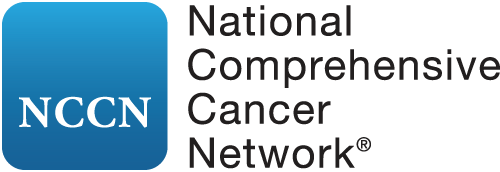Aditya Bardia, MD, MPH, on Clinical Implications of New Findings on Elacestrant vs Standard-of-Care Endocrine Therapy in ER-Positive, HER2-Negative Breast Cancer
Posted: Saturday, December 10, 2022
Aditya Bardia, MD, MPH, of Massachusetts General Hospital, discusses results from the EMERALD study, the emergence of the ESR1 mutation, and how it is involved in the development of resistance to endocrine therapy in previously treated patients. Dr. Bardia explains where elacestrant would fit in the overall treatment paradigm for patients with advanced estrogen receptor (ER)-positive, HER2-negative breast cancer.
Transcript
EMERALD was a randomized phase three clinical trial that enrolled patients with hormone receptor positive metastatic breast cancer in the second, third line setting. The trial required patients to have received prior CDK4/6 inhibitor. Patients were randomized to receive either elacestrant, a novel oral SERD or endocrine therapy of physician's choice, which could be fulvestrant or an aromatase inhibitor. The primary endpoint was progression-free survival in all patients. There was another primary endpoint, which was progression-free survival in patients with ESR-1 mutant breast cancer.
Endocrine therapy plus CDK4/6 inhibitor is the recommended first line treatment option for patient with hormone receptor positive metastatic breast cancer, but patients eventually have disease progression. In part, this could be due to emergence of mutations in ESR-1 or the so-called ESR-1 mutations. These are mutations in the ligand binding domain of the estrogen receptor and they make the tumor estrogen independent. It can signal even in the absence of estrogen and thus resistant to aromatase inhibitors, but drugs that can bind to estrogen receptor directly, example being elacestrant, would work in that setting, so there's interest in targeting ER directly for patients who have ESR-1 mutant breast cancer.
Currently there's one FDA-approved SERD, which is fulvestrant, but it's given as an intramuscular shot. Elacestrant is an oral selective estrogen receptor degrader and has several advantages over fulvestrant. The first, it's oral. Second, in preclinical models, it has demonstrated efficacy that appears to be higher than that of fulvestrant, so it can hit the target, the estrogen receptor. Harder in phase one, phase two, clinical trial, efficacy was observed with elacestrant, even in patients who had received prior fulvestrant, suggesting again that it can block the estrogen receptor harder than fulvestrant. Third, in the EMERALD trial, we saw that if you compare elacestrant to fulvestrant, the progression-free survival was better with elacestrant as compared to fulvestrant. Not only is it oral, it appears to have higher efficacy as well as compared to fulvestrant.
At SABCS 2021, we saw the initial results from the EMERALD trial, which demonstrated that elacestrant is superior to standard endocrine therapy for patients with metastatic hormone receptive positive breast cancer. In the second, third line setting, if we look at the curves, we see there's an initial drop and then separation of the curves. The question was, can we identify the patients who have the initial drop, and the opposite, can we identify the patients who have separation of the curves because that's endocrine sensitive population? SABCS 2022, we saw the updated results using the duration of prior CDK4/6 inhibitor as a surrogate marker to identify endocrine sensitive population, and the results showed that the duration of prior CDK4/6 inhibitor was associated with benefit from elacestrant was a standard endocrine therapy. For example, in the ESR-1 mutant cohort, patients had a median progression-free survival of more than eight months versus about two to three months with standard endocrine therapy, as long as they had received prior CDK4/6 inhibitor for more than 12 months. It appears that the duration of prior CDK4/6 inhibitor can be a surrogate marker to identify endocrine sensitive disease and thus benefit with elacestrant.
Elacestrant is given as an oral agent. The number one side effect seen with elacestrant is nausea, but patients generally do not require anti-nausea medication. In the EMERALD trial, the incidence of use of anti-emetic regimen was very low and majority of the patients were able to continue elacestrant without discontinuing because of toxicity. While this toxicity is seen, it is something that usually can be managed by patients. If needed, anti-emetics can be used. Besides that, there was really no difference in the side effect profile between elacestrant and standard endocrine therapy. Because it's given as an oral shot, you don't have the pain of the intramuscular shot that that happens with fulvestrant. Toxicity that is not seen with elacestrant but can be seen with some of the other oral SERDs, includes there's no incidence of bradycardia, no visual toxicity. These are side effects that can be seen with other oral SERDs but was not seen with elacestrant.
If approved by the FDA, elacestrant would be an option for patients with hormone receptor positive metastatic breast cancer in the second, third line setting. After patients have disease progression on endocrine plus a CDK4/6 inhibitor, in that setting, elacestrant could be utilized. The EMERALD trial demonstrated superiority of elacestrant to standard endocrine therapy. There's also interest in developing combination based therapy. The ELEVATE trial will look at elacestrant plus combination with a PA3 kinase inhibitor or mTOR or CDK4/6. It has different arms, so it'll address elacestrant based combinations for patients with hormone receptor positive metastatic breast cancer.



